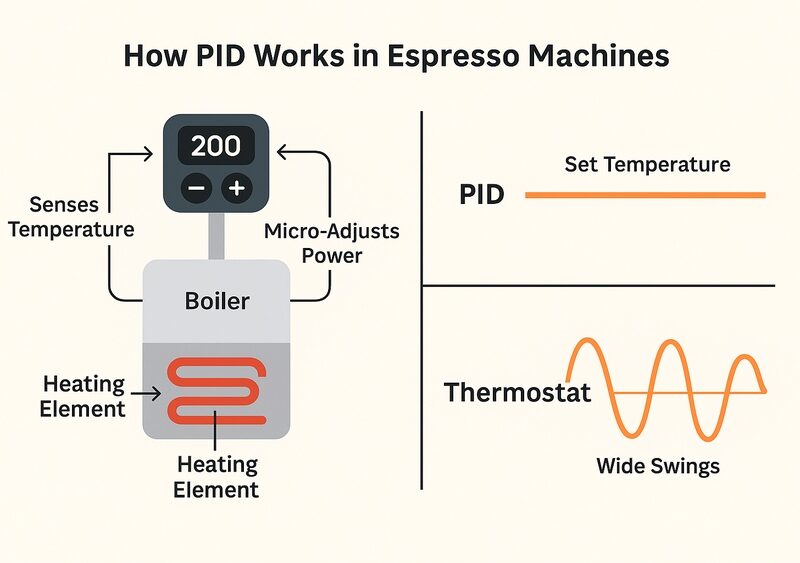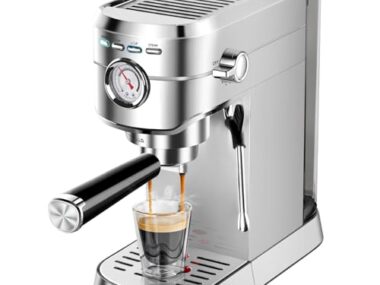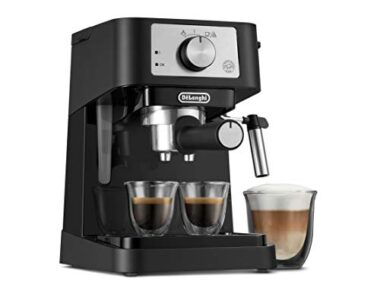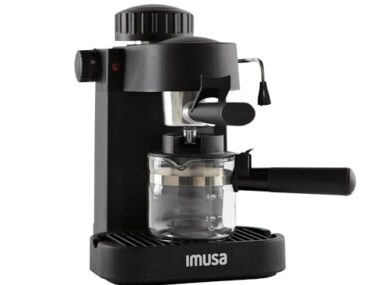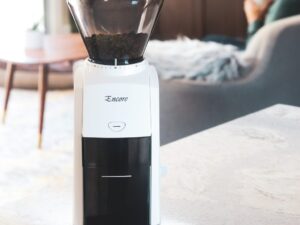Have you ever wondered what happens inside an espresso machine to create that rich, bold shot of coffee you love? Understanding how an espresso machine works can change the way you appreciate your daily cup.
It’s not just hot water and coffee grounds; it’s a precise dance of pressure, temperature, and timing that extracts deep flavors and that iconic crema on top. Whether you’re a coffee enthusiast or just curious about your morning ritual, this guide will walk you through the simple yet fascinating process behind every perfect espresso shot.
Ready to discover what makes your espresso machine tick and how you can make the most out of it? Let’s dive in.
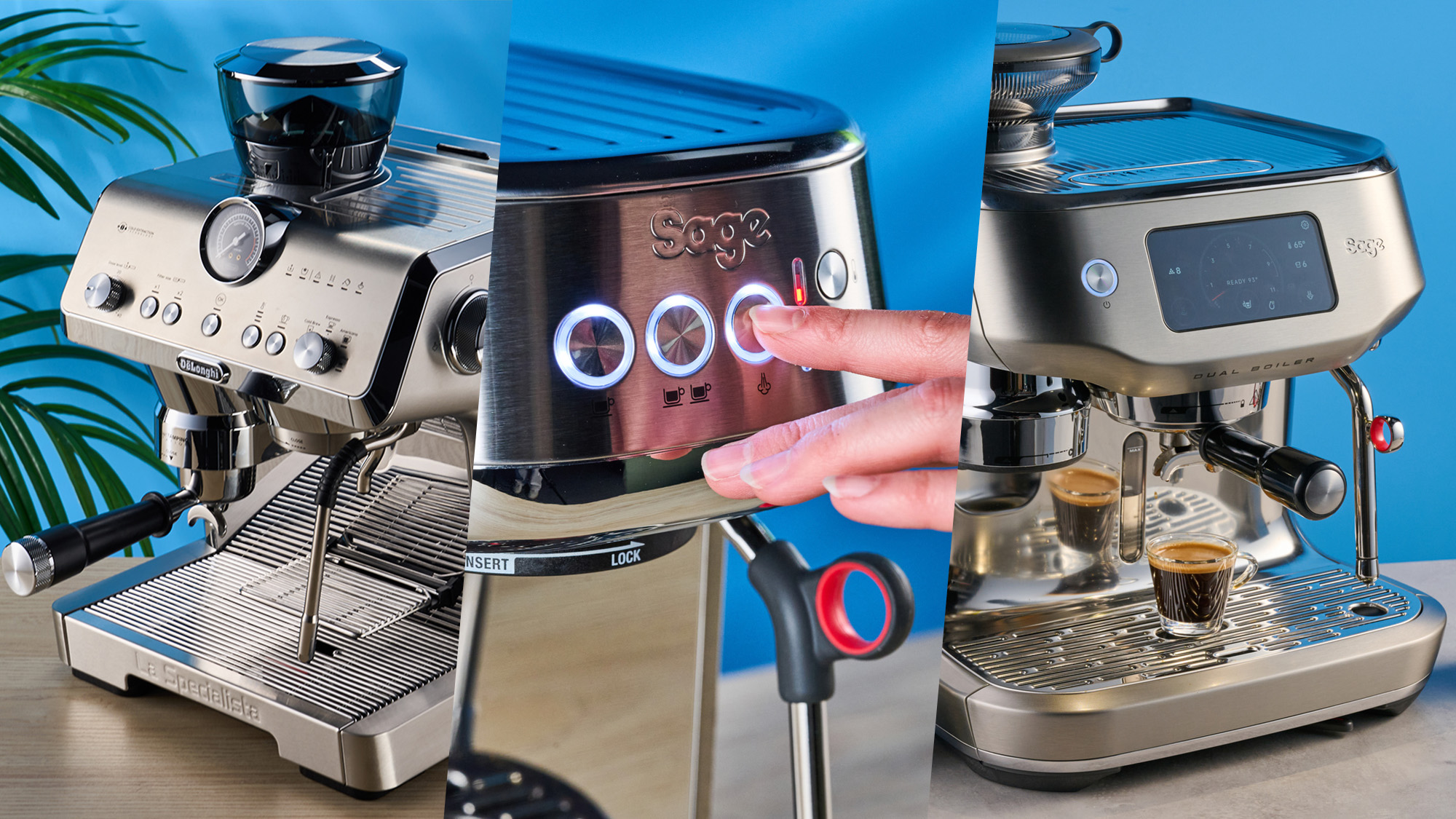
Credit: www.tomsguide.com
Espresso Machine Basics
Understanding the basics of an espresso machine helps you appreciate how it brews rich coffee. These machines use pressure and heat to extract flavors quickly. Every part plays a vital role in making espresso perfect. Below is a breakdown of the key components and their functions.
Key Components
An espresso machine has several main parts working together. The water reservoir stores fresh water. The boiler heats this water. The pump creates pressure. The brew group and portafilter hold and filter the coffee. The steam wand froths milk for drinks like cappuccinos.
Water Reservoir And Boiler
The water reservoir holds cold water ready for brewing. This water moves to the boiler, where it heats up. The boiler keeps water at the right temperature for espresso. Some machines have separate boilers for brewing and steaming to keep temperatures steady.
Pump And Pressure
The pump pushes hot water through the coffee grounds. It creates the pressure needed, usually around 9 bars. This pressure forces water to extract oils and flavors quickly. Without enough pressure, espresso would be weak and watery.
Brew Group And Portafilter
The brew group is where brewing happens. The portafilter holds the ground coffee and locks into the brew group. Hot water flows through the coffee in the portafilter. This process creates the concentrated espresso shot with a rich crema on top.
Steam Wand Function
The steam wand uses steam from the boiler to froth milk. It adds air and heats milk to create creamy foam. This foam is essential for many espresso drinks. The steam wand lets you make cappuccinos, lattes, and more at home.
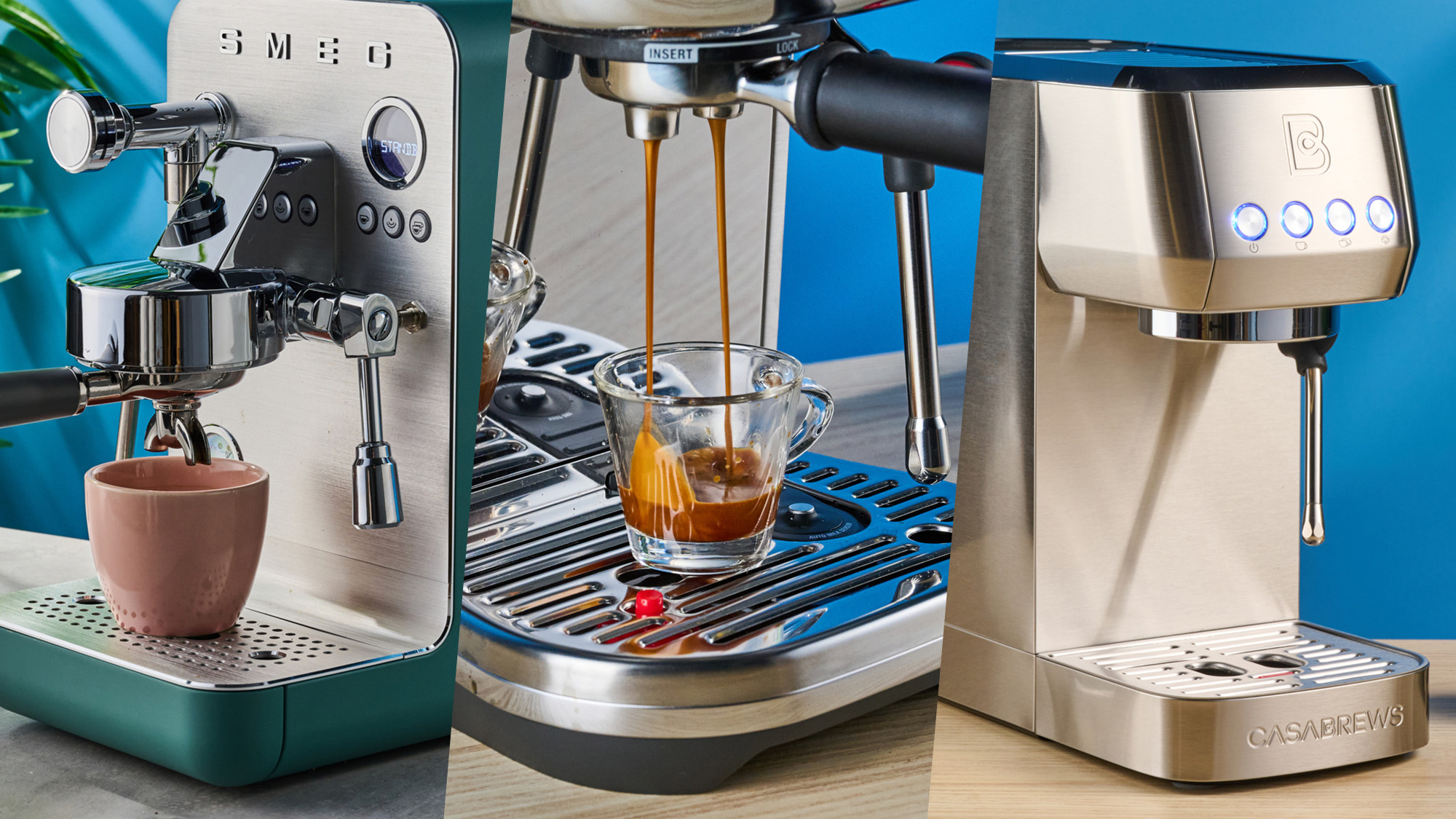
Credit: www.tomsguide.com
Brewing Process
The brewing process is the heart of an espresso machine. It transforms simple coffee grounds and water into a rich, flavorful shot. Each step works together to create the perfect espresso. Understanding these steps helps appreciate the machine’s design and function.
Water Heating
The machine heats water to an ideal temperature. Usually, this is between 190°F and 205°F. This temperature extracts the coffee’s flavors without burning it. The boiler or heat exchanger performs this task quickly and consistently.
Pressurization
High pressure pushes the hot water through the coffee grounds. Most espresso machines use an electric pump to create about 9 bars of pressure. This force is essential to extract oils and flavors. It also helps produce the crema, the creamy foam on top.
Extraction Of Coffee
Water flows evenly through the packed coffee grounds in the portafilter. The pressure and heat extract the rich flavors and aroma. This step takes about 25 to 30 seconds for a proper espresso shot. Too fast or too slow affects taste and strength.
Shot Dispensing
The brewed espresso flows from the portafilter spouts into the cup. The machine controls flow rate to ensure a smooth, balanced shot. The shot has a dark body and a golden crema layer on top. This process captures the essence of espresso.
Milk Frothing Techniques
Many espresso machines include a steam wand for frothing milk. Steam heats and injects air into milk, creating creamy foam. This foam enhances lattes, cappuccinos, and other drinks. The technique requires control of steam pressure and milk temperature.
Types Of Espresso Machines
Espresso machines come in several types. Each type offers a different way to make espresso. Understanding these types helps choose the right machine for your needs. The main types include manual, pump-driven, semi-automatic, automatic, and super-automatic models. Each type varies in control, convenience, and price.
Manual And Lever Machines
Manual and lever machines need you to push a lever to create pressure. This pressure forces hot water through the coffee grounds. You control the pressure and extraction time with your hand. These machines require skill and practice to use well. They give full control over the brewing process.
Pump-driven Machines
Pump-driven machines use an electric pump to create pressure. The pump pushes water through the coffee at a steady rate. This type is more consistent than manual machines. It needs less effort but still allows good control. Many home and commercial machines use this system.
Semi-automatic And Automatic Models
Semi-automatic machines start the pump with a button press. You stop the pump manually to control shot length. This lets you adjust shot time and strength. Automatic models start and stop the pump automatically. They deliver consistent shots with less input. Both types require some user control and skill.
Super-automatic Machines
Super-automatic machines do everything at the push of a button. They grind beans, tamp coffee, brew espresso, and clean. These machines are very easy to use. They suit beginners or busy users who want quick espresso. The tradeoff is less control over the brewing process.
Role Of Pressure In Extraction
Pressure plays a crucial role in espresso extraction. It forces hot water through finely ground coffee. This process extracts flavors, oils, and aromas quickly. Without proper pressure, espresso tastes weak or bitter. Understanding pressure helps improve your espresso quality.
How Pressure Affects Flavor
Pressure controls how fast water passes through coffee grounds. Too low pressure leads to under-extraction. The espresso tastes sour and watery. Too high pressure causes over-extraction. This results in bitterness and harsh flavors. The ideal pressure balances taste and strength. Most machines use 9 bars of pressure for extraction.
Pump Vs Lever Pressure
Modern espresso machines use electric pumps. These pumps create steady and consistent pressure. They allow easy control and repeatability. Lever machines require manual force to generate pressure. This gives baristas more control over extraction. Lever pressure can vary with each pull. Pumps provide more uniform espresso shots.
Maintaining Consistent Pressure
Consistent pressure ensures each espresso shot tastes the same. Fluctuating pressure can ruin the flavor balance. High-quality pumps help maintain steady pressure levels. Regular machine maintenance prevents pressure drops. Cleaning the group head and pump keeps pressure stable. Consistency leads to better espresso and happier drinkers.
Temperature Control
Temperature control is vital in espresso machines. It ensures water heats to just the right degree. This affects coffee taste and crema quality. Too hot or too cold water ruins flavor. Precise temperature helps extract rich, balanced espresso. Machines use different methods to maintain stable heat.
Boiler Types
Espresso machines have various boiler systems. Single boilers heat water for brewing and steaming. They switch between temperatures but take time to adjust. Dual boilers have separate tanks for brewing and steaming. This allows simultaneous use and better temperature control. Heat stability improves with dual boilers.
Heat Exchangers
Heat exchangers use one boiler to serve both functions. Water for brewing passes through a metal tube inside the boiler. It heats quickly to the right temperature. Steam is produced directly from the boiler. This system offers faster brewing and steaming. It balances heat without needing two boilers.
Optimal Brewing Temperature
The ideal water temperature for espresso is 195°F to 205°F (90°C to 96°C). This range extracts flavors without bitterness. Water below 195°F under-extracts, causing weak coffee. Above 205°F, it extracts harsh compounds. Good temperature control keeps water steady in this range. This consistency ensures every shot tastes great.

Credit: www.bonappetit.com
Frothing And Steaming Milk
Frothing and steaming milk are essential steps in making espresso drinks like lattes and cappuccinos. The process adds creamy texture and rich flavor. It transforms cold milk into warm, velvety foam that blends perfectly with espresso. Understanding how to froth and steam milk improves your coffee experience.
Steam Wand Operation
The steam wand uses high-pressure steam from the espresso machine. It heats and aerates the milk, creating foam. Place the wand just below the milk surface. Turn on the steam to release hot vapor. Move the pitcher slowly to mix air evenly. Keep the tip near the surface to form bubbles. Submerge deeper to heat milk without extra foam.
Milk Texturing Tips
Use cold, fresh milk for best results. Whole milk creates creamier foam; skim milk produces lighter foam. Tilt the pitcher slightly for better control. Keep steaming until milk reaches about 140°F (60°C). Avoid overheating, as it can burn milk and ruin taste. Tap the pitcher gently on the counter to break large bubbles. Swirl the milk to make it smooth and shiny.
Creating Latte Art
Latte art starts with well-textured milk. Pour steamed milk slowly into espresso. Use a steady hand and control the flow. Start from a higher position, then move closer to the cup. Create simple shapes like hearts or rosettas by guiding the milk flow. Practice improves your designs and makes drinks look more appealing.
Maintenance Tips
Proper maintenance keeps an espresso machine working well and extends its life. Regular care ensures great tasting coffee every time. Simple habits prevent common problems and costly repairs. Follow these tips to keep your machine in top shape.
Cleaning Components
Clean the portafilter and basket after every use. Rinse the group head to remove leftover coffee grounds. Wipe the steam wand with a damp cloth after steaming milk. Use a small brush to clean hard-to-reach parts. Regular cleaning stops buildup and keeps flavors pure.
Descaling The Machine
Descale to remove mineral deposits from water. Use a descaling solution or vinegar diluted with water. Run the solution through the machine following the manufacturer’s steps. Rinse thoroughly by running clean water afterward. Descaling prevents clogs and maintains proper pressure.
Routine Checks For Performance
Check the water reservoir for cleanliness and fill level. Inspect seals and gaskets for wear or leaks. Test the pressure gauge to ensure it reaches the right level. Listen for unusual noises during brewing or steaming. Fixing small issues early avoids bigger problems later.
Frequently Asked Questions
How Does An Espresso Machine Work Step By Step?
An espresso machine heats water in the boiler, then a pump creates high pressure. Hot water passes through ground coffee in the portafilter. The espresso flows into the cup. Optionally, a steam wand froths milk for drinks like lattes or cappuccinos.
How Does The Espresso Coffee Maker Work?
An espresso machine heats water and uses high pressure to force it through finely-ground coffee. This extracts rich, concentrated espresso quickly. The portafilter holds the coffee grounds, while a pump or lever generates pressure. Steam wands froth milk for creamy drinks like lattes or cappuccinos.
How Do Espresso Machines Generate Pressure?
Espresso machines generate pressure using an electric pump or manual lever. The pump forces hot water through coffee grounds at around 9 bars of pressure. This high pressure extracts rich flavors and creates crema, producing a concentrated espresso shot quickly and efficiently.
What Does An Espresso Machine Actually Do?
An espresso machine heats water and uses high pressure to force it through finely ground coffee. This extracts a rich, concentrated espresso shot. It also steams milk using a steam wand for creamy textures in drinks like lattes and cappuccinos.
Conclusion
Understanding how an espresso machine works helps you appreciate your coffee more. Hot water and pressure work together to extract rich flavors. The pump pushes water through coffee grounds in the portafilter. Steam wands create creamy milk foam for specialty drinks.
Each part plays a key role in making espresso. Next time you sip espresso, remember the simple science behind it. It’s a mix of heat, pressure, and timing. Brewing espresso is both art and machine working as one.
